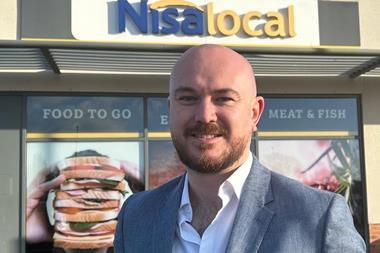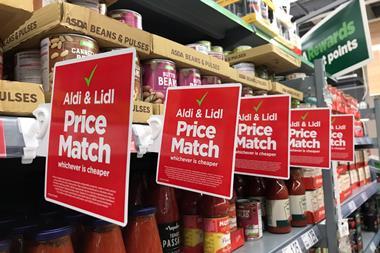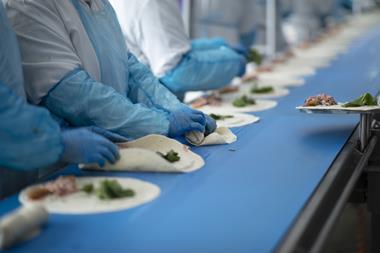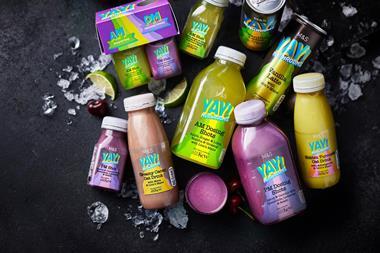The vertical hydroponic plant display being built at East End Foods’ new depot is more than just decoration. The company’s founder hopes it will revolutionise the way fresh produce is grown
Tony Deep Wouhra stands in the empty glass atrium of East End Foods’ new depot in Aston Cross.
Unlike the image above, it’s not a pretty sight at the moment. But in the next few months this shell will be in full bloom. Wouhra is building a groundbreaking workshop at the depot, where he will show consumers how a vertical growing system works.
It’s all part of hydroponics evangelist’s mission to teach to teach urban UK households that they can use the system to grow vegetables in 20-25 days. Wouhra believes hydroponics is a sustainable way to meet demand for food in the future. He’s not the only one. A raft of community organisations have sprung up in the UK over the past few years that embrace hydroponics and other similar technologies. But how viable is the system commercially and what are the chances of it becoming commonplace in households across the UK?
The use of vertical hydroponics is as old as the hanging gardens of Babylon, but it’s only over the last few years that the idea has really started to take off on an industrial scale and perhaps more significantly in a domestic context.
Thanks to government support, the Netherlands has developed a large hydroponics industry, and the US is currently seeing a rapid growth of small-scale hydroponic systems in households. In the UK the technique is fairly established among lettuce, tomato and strawberry growers, but on a fixed horizontal layout.
What’s different about the vertical hydroponics that Wouhra waxes lyrical about, is that space is more productive. For every 10 lettuces grown intensively in soil, or 40 grown using conventional hydroponics, 250 can be grown on a six-metre high VertiCrop unit. Thanks to the use of artificial light, crops can even be grown in a warehouse, freeing up land to grow other food.
It’s a significant upside, points out Wouhra. “There is not enough land in the world: 67% of all agricultural land is used to rear food for animals and only 33% for humans,” he says, adding: “Urban people ought to understand that it’s possible to grow leafy plants that are healthy and can be grown in 25 days.”
To this end, East End’s vertical farm will feature 10 conveyors that move all the time, ensuring that the plants are maintained at an even temperature and exposed to equal amounts of light. Visitors will be able to walk up a ramp that snakes around the plants and up two storeys and features an exhibition on the history of human diet. Once they reach the top, they will be able to sample Indian, Mediterranean and Italian meals prepared by a professional chef using the hydroponically grown leaves.
“We are a nation of garden lovers. All we need is to grow vegetables instead of flowers”
Tony Deep Wouhra, East End Foods
“The chefs will also show visitors that you can use four pieces of meat instead of six and still have a very tasty meal,” adds Wouhra. “We want to encourage people to reduce their meat intake and increase their vegetable intake. Hopefully they’ll be convinced and want to buy a five-foot frame at the end.”
The hydroponics kit could fit on the balcony of a flat, he says. “The urban farm is a simple message: we are a nation of garden lovers. All we need is to grow vegetables instead of flowers.”
It’s a view supported by Paignton Zoo’s Kevin Frediani, who tends the world’s first vertical crop installation, which is currently open to the public. The zoo installed the 70 sq m VertiCrop equipment in the hope of replacing the 10,000 lettuces it was buying in each year, at a cost of £10,000, to feed its animals. Since the 2009 installation, Frediani has grown over £40,000 worth of produce. “We’ve grown crops we wouldn’t have been able to afford, and others that aren’t available commercially,” he says. “We couldn’t have afforded watercress before. It’s nutritionally better and it’s given straight to the animals after harvesting.”
A study conducted by Plymouth University discovered that the nutrients in a hydroponic lettuce grown at the zoo were “off the scale” compared with a lettuce grown conventionally. And after people started asking “Can I eat it too?”, the zoo’s restaurant began serving up the hydroponic produce every day.
Paignton Zoo’s hydr0ponic model has been visited by food security experts from 42 countries. “The message on conservation has hit home more than any animal success has done,” says Frediani.
Food giants have also started paying attention. Frediani says that he is working with Europe’s largest frozen food supplier to test if vertical farming can be used commercially in a warehouse. It could mean crops that usually have an eight-week harvest could be grown year round, without herbicides. Consumer interest is also growing. wholesaler HydroGarden says sales of systems that can be used in the home are up 20% year-on-year, driven by Europe.
Whether hydroponics really gains traction in a domestic context will depend on public understanding. “Part of the problem is that the food industry has slowly moved to hydroponic production, but hasn’t told the public how it works,” says Frediani. “With the public exhibition I’m trying to tell people it’s OK, and present information to a public that thinks carrots come from Sainsbury’s in a plastic bag. The Daily Mail mentality is going to underwrite whether we succeed or fail.”
As will the popularity of East End’s vertical farm and its five-foot tall hydroponics kits.



















No comments yet